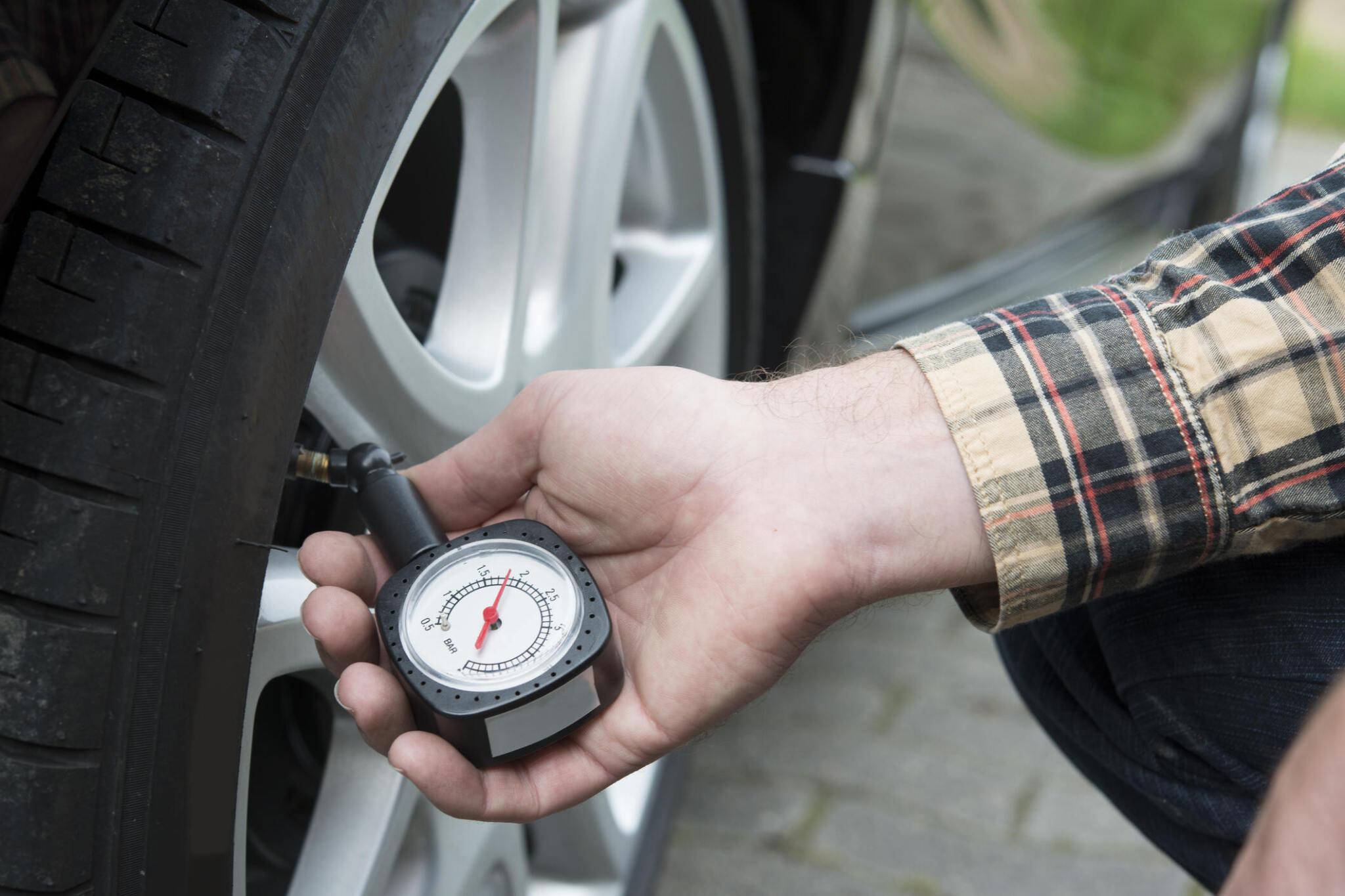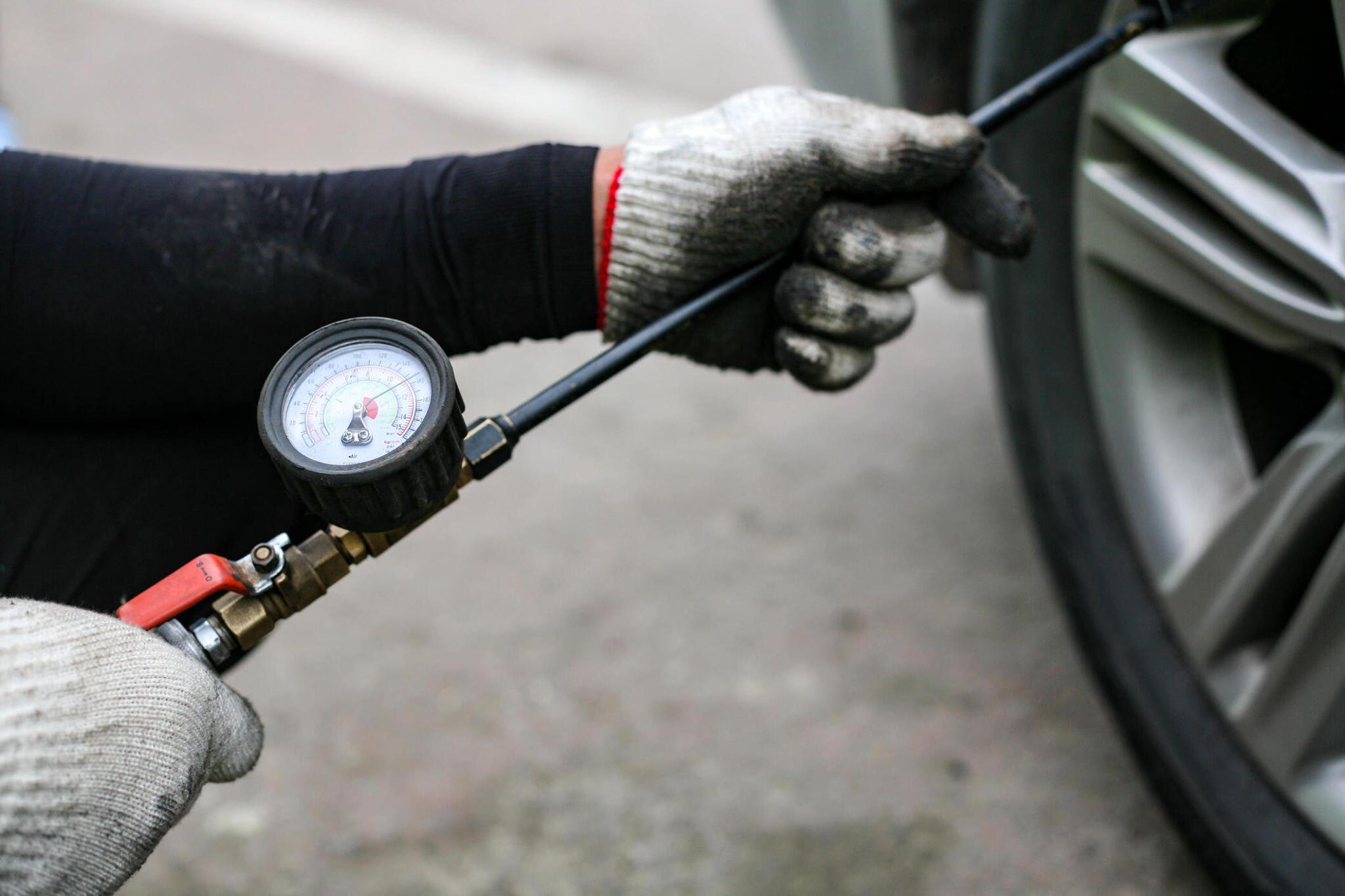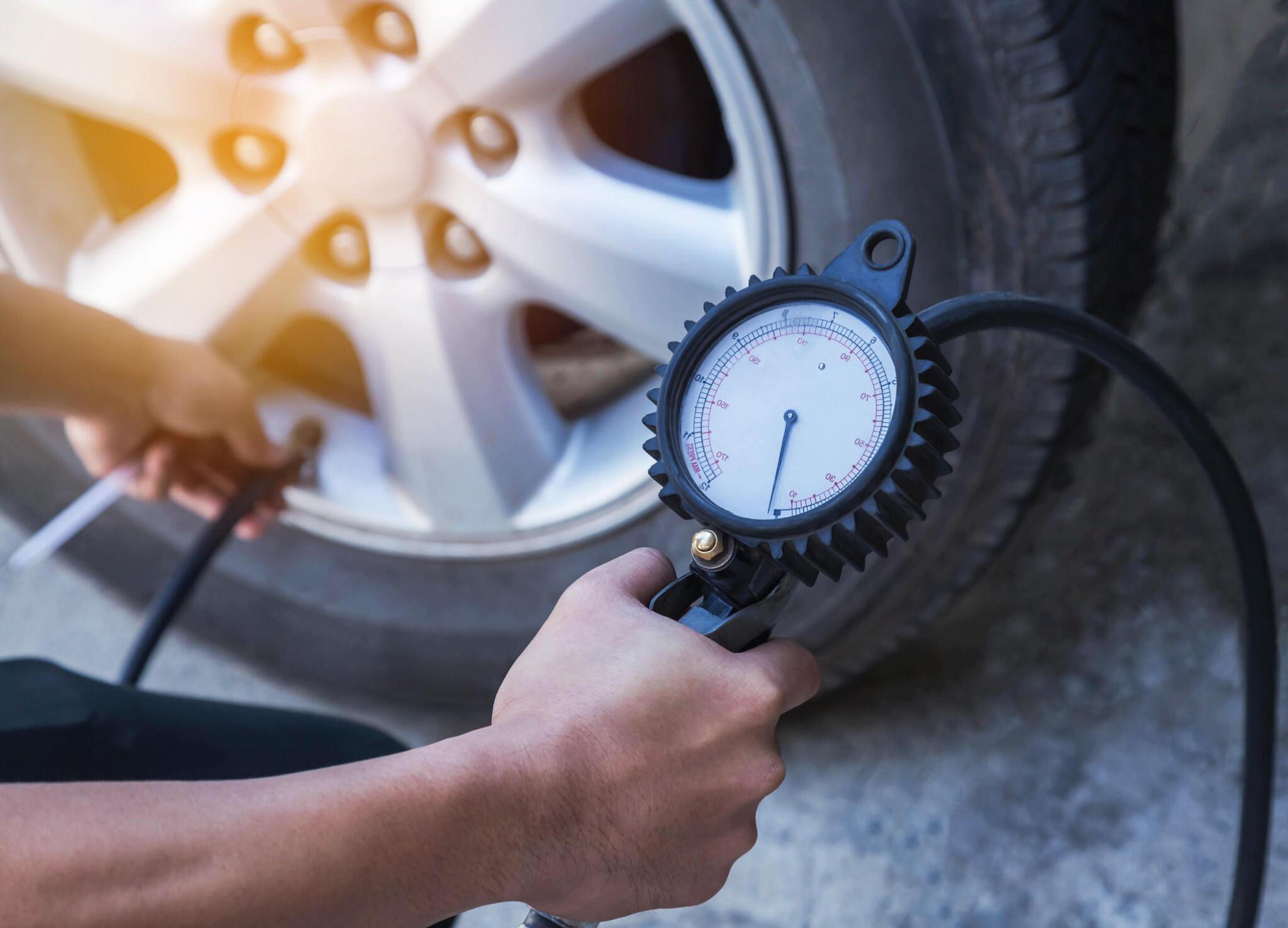Last Updated on August 30, 2024
Introduction To TPMS sensor
Tire Pressure Monitoring Systems (TPMS) have become essential to modern automotive safety. Their primary function is to continuously monitor the air pressure inside the pneumatic tires of various types of vehicles. This article provides a detailed explanation of TPMS and underscores the importance of tire pressure monitoring.
Overview of TPMS
TPMS is a technologically advanced system designed to alert the driver when one or more tires are significantly under-inflated, potentially leading to unsafe driving conditions. The origin of TPMS can be traced back to the late 20th century, but it gained significant prominence in the early 2000s, especially after several high-profile tire safety incidents.
Importance of Tire Pressure Monitoring
Properly inflated tires are essential for a Here are some key reasons why tire pressure monitoring is essential:
- Safety: Under-inflated tires can lead to diminished control over the vehicle, potentially resulting in accidents. They are also more prone to overheating, which can cause tire blowouts.
- Fuel Efficiency: Tires at the correct pressure level minimize rolling resistance, directly impacting fuel consumption. Under-inflated tires can increase fuel use, affecting the vehicle’s efficiency.
- Tire Lifespan: Maintaining the correct tire pressure ensures even tire wear, thereby extending the lifespan of the tires. Over or under-inflation leads to uneven or accelerated tire wear.
- Environmental Impact: Proper tire pressure helps in reducing CO2 emissions. Vehicles with under-inflated tires have higher fuel consumption and, consequently, higher emissions.
- Economic Impact: Regular monitoring and maintaining tire pressure can lead to cost savings by reducing the frequency of tire replacements and improving fuel economy.
The significance of TPMS lies in its ability to provide real-time alerts, ensuring that tire pressure issues are addressed promptly, thereby maintaining optimal vehicle performance and safety.
Understanding TPMS (Tire Pressure Monitoring System)
Tire Pressure Monitoring Systems (TPMS) are safety features in modern vehicles that monitor and report real-time tire pressure information. We will examine the definition and function of TPMS, its types, safety, and additional benefits.
Definition and Function
TPMS stands for Tire Pressure Monitoring System, a technology that monitors the air pressure inside a vehicle’s tires. Its primary function is to alert the driver in real-time about any significant under-inflation in any tire.
This alert is usually in the form of a warning light on the vehicle’s dashboard. By providing this information, TPMS helps prevent tire-related accidents due to underinflation, enhances fuel efficiency, and prolongs the life of the tires.
Types of TPMS Sensors
There are two main types of TPMS:
- Direct TPMS: This system uses pressure monitoring sensors within each tire to measure the tire pressure directly. These sensors send data to the vehicle’s computer system, alerting the driver if the pressure drops below a preset level. Direct TPMS is known for its accuracy and reliability, providing specific information about each tire. Additionally, these sensors can detect both rapid and gradual loss of pressure.
- Indirect TPMS: Indirect TPMS, on the other hand, does not use physical pressure sensors within the tires. Instead, it works with the vehicle’s Anti-lock Braking System (ABS) wheel speed sensors. If a tire’s pressure is low, it will roll at a different wheel speed than the others. The system detects these variations and alerts the driver. While less costly than direct TPMS, indirect systems are less accurate and may require manual calibration (like after changing a tire or adjusting tire pressure).
How does TPMS Improve Safety?
The safety benefits of TPMS are significant and multifaceted:
- Prevention of Tire Failure: By alerting the driver to low tire pressure, TPMS helps prevent tire failures like blowouts, which can lead to severe accidents.
- Improved Vehicle Handling: Properly inflated tires ensure better handling and control of the vehicle, which is crucial for safe driving.
- Decreased Stopping Distances: Correct tire pressure is essential for optimal braking performance. TPMS helps maintain the correct pressure for effective braking.
Benefits of TPMS Beyond Safety
In addition to enhancing safety, TPMS offers several other advantages:
- Fuel Economy: Properly inflated tires reduce rolling resistance, which improves fuel economy. TPMS helps maintain optimal tire pressure, leading to significant fuel savings.
- Extended Tire Life: Consistent and correct tire pressure reduces uneven wear and tear, extending the lifespan of tires and saving money in the long term.
- Environmental Benefits: Improved fuel efficiency also means reduced carbon emissions, contributing to environmental conservation.
- Convenience and Peace of Mind: TPMS offers drivers the convenience of not having to manually check tire pressures, providing peace of mind regarding their vehicle’s safety.

Identifying TPMS in Your Vehicle
Understanding how to identify the presence and functionality of a Tire Pressure Monitoring System (TPMS) in your vehicle is necessary to maintain tire health and ensure road safety. Here’s how you can identify TPMS in your car:
Visual Indicators on the Dashboard
The most immediate method to identify if your vehicle has TPMS is through the dashboard indicators. Most modern vehicles equipped with TPMS have a specific warning light on the dashboard, often depicted as an exclamation mark within a flat tire symbol or sometimes as a text alert.
This light appears when there is a significant deviation in tire pressure. Familiarizing yourself with your vehicle’s specific indicator through the owner’s manual is essential. Some cars also have advanced TPMS displaying real-time tire pressure readings.
Checking Your Vehicle’s Manual
Your vehicle’s owner manual is a valuable resource for TPMS information. It provides specific details about whether the car is equipped with TPMS, the type of system used (direct or indirect), and instructions on how it operates. The manual also guides how to respond to TPMS alerts and reset procedures after tire inflation or replacement.
Physical Inspection of Tires and Wheels
A physical inspection can be another method to determine the presence of TPMS, especially for direct systems. You can often identify a direct TPMS sensor by examining the valve stem on each tire.
If the valve stems are metal and appear more substantial than typical rubber ones, your vehicle is likely equipped with direct TPMS. However, this method may only sometimes be accurate as some newer models have less conspicuous sensors.
Utilizing Diagnostic Tools
Automotive diagnostic tools can be used to check for TPMS. Specialized TPMS readers and scanners that can communicate with the vehicle’s computer system to confirm the presence of TPMS and assess its functionality are available. These tools are handy for detailed diagnostics, such as identifying specific faulty sensors or system malfunctions.
Consulting a Professional
Consulting a professional mechanic or tire expert is advisable if you need help determining the presence or condition of your vehicle’s TPMS. These professionals can quickly determine whether your car has TPMS and the type of system installed and provide insights into the system’s health. They can also offer advice on maintenance and potential replacements if necessary.
It is essential for vehicle maintenance to identify whether your vehicle has a TPMS and ensure its proper functionality. It involves a combination of dashboard indicators, manual checks, physical inspections, diagnostic tools, and professional advice.
Can TPMS Sensors Fail?
Yes, TPMS sensors can fail, and their failure can be attributed to several factors:
- Battery Life: Battery depletion is the most common cause of TPMS sensor failure. Most sensors are powered by a built-in battery, typically lasting 5 to 10 years. Once the battery dies, the sensor becomes non-functional.
- Damage or Wear: Sensors can fail due to physical damage, corrosion, or wear and tear. This can happen if a tire is replaced improperly or the sensor is damaged by road debris or harsh driving conditions.
- Technical Malfunctions: Like any electronic device, TPMS sensors can sometimes experience technical issues, such as signal interference or malfunctioning components.
How to Maintain TPMS Sensors
TPMS is a vital safety feature in modern vehicles but requires effective awareness and maintenance. Maintaining TPMS sensors involves several practices:
- Regular Checks: Regularly check your TPMS system for proper functionality. If your dashboard indicator shows a warning light, promptly investigate and address the issue.
- Proper Tire Services: When getting tires serviced or replaced, ensure that the service provider is knowledgeable about TPMS and does not damage the sensors. Some tire servicing tasks may require TPMS re-calibration.
- Battery Checks: Be aware of the battery life in your TPMS sensors. If your vehicle is approaching the 5-10-year mark, consider having the sensors checked and possibly replaced.
- Avoiding Corrosion: Corrosion can be a significant problem, especially for the valve stem-type sensors. Using proper valve caps and ensuring they are tightly fitted can help prevent moisture and salt from causing corrosion.
- Consult Professionals: If you suspect any issues with your TPMS sensors or are unsure about their condition, consult a professional mechanic. They can perform diagnostic tests to ensure your TPMS is functioning correctly.

Troubleshooting TPMS Issues
Tire Pressure Monitoring System (TPMS) issues can concern many drivers. Identifying and addressing common TPMS problems is necessary for every vehicle owner. Let’s examine the typical warning signs of TPMS issues, how to reset the system when replacing TPMS sensors, and the decision between DIY and professional maintenance.
Common TPMS Warning Signs
Several indicators suggest issues with the TPMS:
- TPMS Warning Light: The most apparent sign on the dashboard is the TPMS warning light, which typically looks like an exclamation mark inside a flat tire symbol. If this light stays on, it indicates that one or more of your tires are significantly under-inflated. If the light flashes and remains on, it may indicate a malfunction with the TPMS.
- Inconsistent Tire Pressure Readings: If your vehicle is equipped with a TPMS that displays tire pressure readings that are inconsistent or erratic, it could signify a problem with the sensors or the system.
- Failure to Reset: The system may have an issue if the TPMS warning light does not turn off as expected after adjusting tire pressure.
Resetting Your TPMS
Resetting the TPMS is typically required after adjusting tire pressure or replacing a tire. The process for resetting can vary depending on the vehicle model:
- Manual Reset: Some vehicles have a TPMS reset button, usually under the steering wheel, which must be pressed and held until the warning light blinks thrice.
- Driving Reset: In some cases, driving the vehicle for a certain distance at a specific speed can automatically reset the TPMS.
- Using a Diagnostic Tool: For some vehicles, a specialized diagnostic tool might be required to reset the TPMS. This is often the case with direct TPMS systems.
When to Replace TPMS Sensors
TPMS sensors are not perpetual and need replacement over time. The typical scenarios for relief include:
- Battery Life Exhaustion: The built-in batteries in TPMS sensors have a finite life, usually between 5 to 10 years. Once depleted, the entire sensor needs replacement.
- Damage or Corrosion: Sensors can get damaged or rusted, necessitating replacement. This can happen due to impact, exposure to harsh chemicals, or general wear and tear.
- After Tire Replacement: Sometimes, replacing tires can affect the TPMS sensors, primarily if not appropriately handled.
DIY vs. Professional TPMS Maintenance
Deciding between DIY and professional maintenance for TPMS depends on the issue’s complexity and the individual’s technical skill. Here are tips to help you choose between the two options:
- DIY Maintenance: DIY is usually sufficient for simple issues like resetting the TPMS after inflating tires. This requires following the vehicle’s manual instructions.
- Professional Maintenance: Professional service is recommended for more complex issues like sensor replacement or diagnosing system errors. Professionals have the necessary tools and expertise to handle TPMS issues correctly.
Legal and Regulatory Aspects of TPMS
Tire Pressure Monitoring Systems (TPMS) implementation and regulation are guided by various legal and regulatory frameworks worldwide. Understanding these regulations is beneficial for vehicle manufacturers, importers, and owners.
TPMS Regulations Worldwide
TPMS regulations vary significantly across different regions and countries, reflecting the diverse approaches to vehicle safety standards:
- United States: In the U.S., the use of TPMS in vehicles is mandated by federal law, primarily driven by the TREAD Act. The act, passed in 2000, requires TPMS on all new passenger cars, light trucks, and buses weighing less than 10,000 pounds manufactured after September 2007. The regulation responded to safety concerns arising from accidents caused by under-inflated tires.
- European Union: The European Union enforced its TPMS regulation starting with all new passenger vehicle models (type-approved) from November 2012 and all new passenger vehicles sold from November 2014. The regulation requires an active TPMS to alert the driver of significant under-inflation in any vehicle’s tires.
- Other Countries: Many countries have followed suit in implementing TPMS regulations, often aligning with U.S. or EU standards. For example, South Korea, Russia, and Japan have TPMS requirements for new vehicles.
Compliance and Penalties
Compliance with TPMS regulations is a matter of legal obligation and a significant safety concern. The consequences of noncompliance can be substantial:
- For Manufacturers and Importers: Vehicle manufacturers and importers face the most significant responsibility for compliance. Non-compliant vehicles cannot be legally sold in regions where TPMS is mandated. Noncompliance penalties can include substantial fines, recall orders, and reputational damage.
- For Vehicle Owners: While the primary responsibility for TPMS compliance lies with manufacturers, vehicle owners must also be aware of these regulations. In some regions, the absence or malfunctioning of TPMS can affect vehicle inspection and registration processes. Owners may be required to ensure that the TPMS is functional and may face fines or penalties if found non-compliant during vehicle inspections.
- Insurance and Liability: Sometimes, failure to comply with TPMS regulations can also affect insurance claims. If an accident is linked to a tire-related issue that a functioning TPMS could have detected, there may be complications with insurance claims or additional liability concerns.

Future of TPMS Technology
Tire Pressure Monitoring Systems (TPMS) is evolving rapidly, with advancements driven by technological innovations and the rise of autonomous vehicles. As vehicles become more self-reliant, the importance of TPMS in monitoring and maintaining essential components like tires will only grow.
Innovations in TPMS
The future of TPMS lies in enhanced precision, integration with other vehicle systems, and advanced data analytics. Key innovations include:
- Smart TPMS: The next generation of TPMS is expected to go beyond just monitoring tire pressure. Smart TPMS might include tire temperature monitoring, real-time data analytics, and predictive maintenance alerts.
- Integration with Vehicle Telematics: Integration with broader vehicle telematics systems is another critical development. This integration can give drivers more comprehensive insights into vehicle performance and maintenance needs.
- Wireless and Battery-less Sensors: Research is underway to develop wireless and battery-less TPMS sensors. These sensors could harness energy from the tire rotation or other vehicle dynamics, eliminating the need for battery replacements.
- Advanced Diagnostics: Future TPMS could offer more advanced diagnostic capabilities, such as detecting uneven tire wear or alignment issues, providing a holistic approach to tire maintenance.
- AI and Machine Learning: Incorporating AI and machine learning algorithms can enable TPMS to predict potential tire-related issues before they become serious, enhancing safety and maintenance efficiency.
The Role of TPMS in Autonomous Vehicles
As vehicles become more autonomous, the role of TPMS is expected to become even more significant due to the following reasons:
- Enhanced Safety Protocols: In autonomous vehicles, safety is required. A sophisticated TPMS will ensure that tires are always in optimal condition, as tire issues could significantly impact the vehicle’s safety and operational efficiency.
- Integration with Vehicle Control Systems: TPMS will likely be integrated more deeply into the vehicle’s control systems in autonomous cars. This integration will allow real-time adjustments to driving patterns based on tire condition, enhancing safety and performance.
- Data Contribution to AI Systems: Tire data collected by TPMS can feed into the vehicle’s AI systems, contributing to the autonomous vehicle’s overall situational awareness and decision-making capabilities.
- Predictive Maintenance: For fleet operators of autonomous vehicles, TPMS can provide crucial data for predictive maintenance, minimizing downtime, and optimizing fleet management.
Conclusion & Recommendations
As we conclude our comprehensive exploration of Tire Pressure Monitoring Systems (TPMS), it’s necessary to summarize the key points and reiterate the significance of TPMS in ensuring vehicular safety and efficiency.
Summary of Key Points
- What is TPMS? TPMS is a significant safety feature in modern vehicles that monitors tire pressure, alerting drivers about significant under-inflation, thereby preventing potential tire-related accidents.
- Types of TPMS: There are two main types of TPMS – direct and indirect. Direct TPMS measures tire pressure through sensors in each tire, while indirect TPMS uses the vehicle’s anti-lock braking system to approximate tire pressure.
- Identifying TPMS in Your Vehicle: You can locate TPMS through visual dashboard indicators, consulting the vehicle’s manual, physical inspections, using diagnostic tools, or seeking professional advice.
- Common Questions about TPMS: TPMS is standard in many vehicles, particularly in the United States and the European Union. TPMS sensors can fail primarily due to battery life or damage, requiring proper maintenance.
- Troubleshooting TPMS Issues: Common TPMS issues can be identified through warning signs on the dashboard, and troubleshooting may involve resetting the system or replacing sensors. Both DIY and professional maintenance approaches have their place.
- Legal and Regulatory Aspects of TPMS: TPMS regulations vary worldwide, with stringent compliance requirements in many regions to ensure vehicle safety.
- Future of TPMS Technology: The end of TPMS is geared towards more intelligent, more integrated systems, particularly in the context of autonomous vehicles.
Final Thoughts on the Importance of TPMS
The primary role of TPMS in enhancing safety by preventing tire failures, improving vehicle handling, and reducing stopping distances is invaluable. Beyond security, TPMS contributes to better fuel efficiency and reduced environmental impact through lower emissions.
For vehicle owners, understanding and maintaining the TPMS is a regulatory requirement and a necessary aspect of responsible vehicle ownership. As we embrace technological advancements in the automotive industry, TPMS will play an even more significant role in ensuring safe and efficient driving.
Why Tires Easy
Having the right tires is just as important as maintaining your TPMS. For those looking to purchase new tires, whether to replace worn-out ones or to upgrade for better performance, Tires Easy offers a wide selection to meet all your needs.
With an extensive range of options catering to different vehicle types and driving conditions, Tires Easy ensures you find the perfect match for your vehicle.
Enhance your driving experience and ensure maximum safety – click here to explore our collection and find the best tires for your vehicle.
FAQs
How do I know if my car has a TPMS sensor?
You can identify if your car has TPMS by looking for a warning light on the dashboard that resembles a flat tire with an exclamation mark or by checking your vehicle’s manual.
Do all cars come with TPMS sensors?
Not all cars come with TPMS sensors. In the United States, it’s mandatory for all new vehicles sold after September 2007 to have TPMS, but this may vary in other countries.
Is this vehicle equipped with TPMS?
To determine if a vehicle is equipped with TPMS, check for the TPMS warning light on the dashboard when you start the car or refer to the vehicle’s manual.
What does the TPMS symbol look like?
The TPMS symbol resembles an exclamation mark inside a horseshoe-like symbol, representing a flat tire.
What does a TPMS sensor do?
A TPMS sensor monitors the air pressure in your vehicle’s tires and alerts you through a warning light on your dashboard if the pressure falls below a safe level.
Is it OK to drive a car with the TPMS light on?
Driving with the TPMS light on is not recommended as it indicates low tire pressure, leading to decreased fuel efficiency, poor handling, and potential tire failure.
Are TPMS sensors necessary?
TPMS sensors are necessary for safety, as they alert you about under-inflated tires, which can compromise vehicle handling and increase the risk of tire-related accidents.
How much does it cost to replace a TPMS sensor?
The cost to replace a TPMS sensor can vary, typically from $50 to $250 per sensor, depending on the vehicle make and model and the type of sensor.
-
Writer










 English
English Français
Français Español
Español